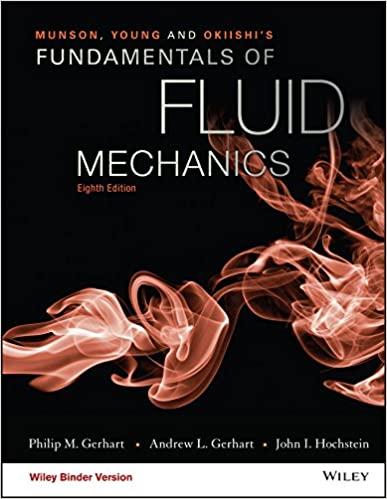The pressure drop, (Delta p), over a certain length of horizontal pipe is assumed to be a
Question:
The pressure drop, \(\Delta p\), over a certain length of horizontal pipe is assumed to be a function of the velocity, \(V\), of the fluid in the pipe, the pipe diameter, \(D\), and the fluid density and viscosity, \(ho\) and \(\mu\).
(a) Show that this flow can be described in dimensionless form as a "pressure coefficient," \(C_{p}=\Delta p /\left(0.5 ho V^{2}\right)\) that depends on the Reynolds number, \(\operatorname{Re}=ho V D / \mu\).
(b) The following data were obtained in an experiment involving a fluid with \(ho=2\) slugs \(/ \mathrm{ft}^{3}\), \(\mu=2 \times 10^{-3} \mathrm{lb} \cdot \mathrm{s} / \mathrm{ft}^{2}\), and \(D=0.1 \mathrm{ft}\). Plot a dimensionless graph and use a power law equation to determine the functional relationship between the pressure coefficient and the Reynolds number.
(c) What are the limitations on the applicability of your equation obtained in part (b)?

Step by Step Answer:

Munson Young And Okiishi's Fundamentals Of Fluid Mechanics
ISBN: 9781119080701
8th Edition
Authors: Philip M. Gerhart, Andrew L. Gerhart, John I. Hochstein




